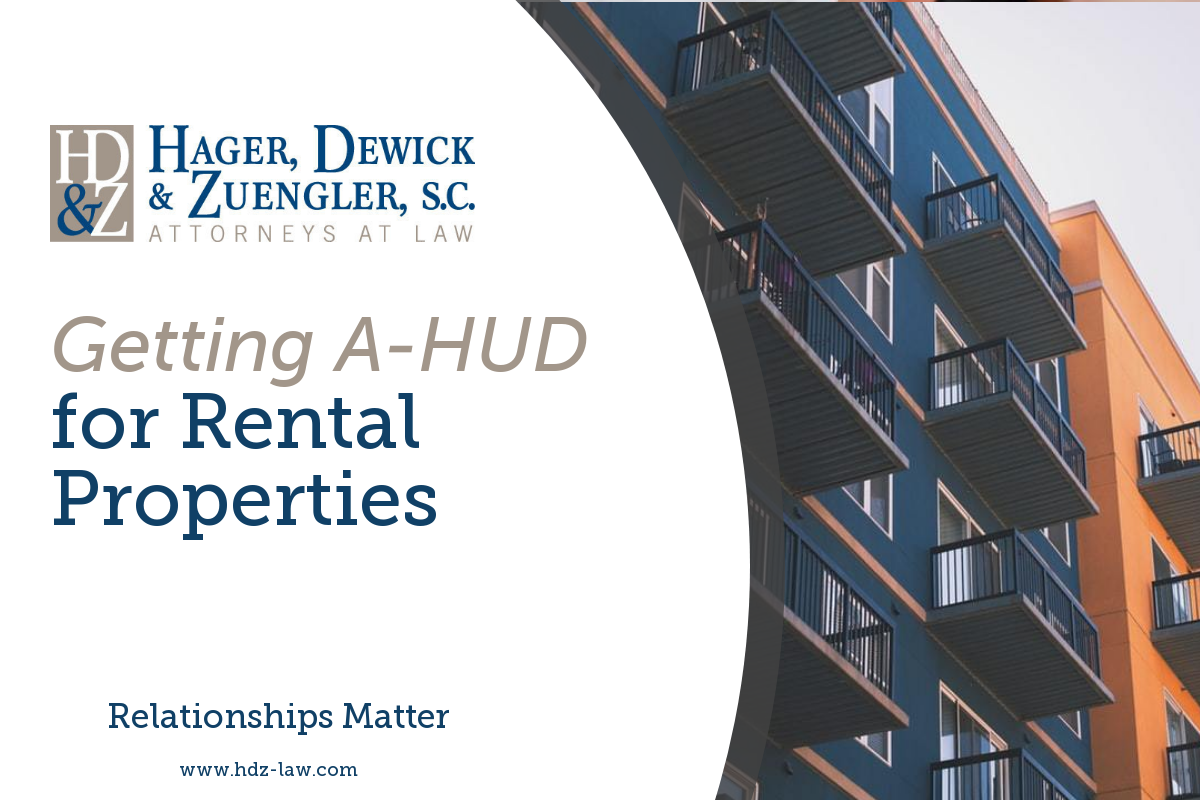
Getting A-HUD in Rental Properties: In 2018 alone, 570 insured mortgages totaling over $8 billion in endorsements were administered for multifamily loan projects by the U.S. Department of Housing and Urban Development’s (“HUD”) Federal Housing Administration (“FHA”). Since HUD shows no signs of slowing down, now is the time that owners, operators and potential purchasers of multifamily properties learn about the benefits of multifamily loan insurance programs, particularly those offered under Section 223(f) of the National Housing Act of 1934 (“NHA”), as discussed below.
The FHA was created under the NHA to improve housing standards by creating a financing system that provided insurance for mortgage loans to help stabilize the housing market. When HUD was created as an agency in 1965, the FHA became part of the organization and focused on residential properties, and overall management of HUD’s multifamily housing programs. In fact, after the 2007-2010 Housing Crisis, the FHA became one of the largest insurers of home financing in the U.S.
While more entities in the industry are taking advantage of HUD’s FHA 223(f) program, it is still widely misunderstood as being only available for low-income housing or non-profit organizations. In reality, HUD’s FHA 223(f) program offers mortgage insurance to single-asset, non-profit and for-profit entities to facilitate the funding necessary to refinance or acquire market rate, affordable or rental assisted apartment multifamily properties.
In order to qualify for the program, certain requirements must be met:
- The property must contain at least 5 residential units with complete kitchens and baths.
- The units must have been completed or substantially rehabilitated for at least 3 years prior to the date of application for HUD’s FHA 223(f)-insured loan.
- The property must achieve an average physical occupancy of 85% for a period of 6 months prior to application submission through the final endorsement.
- Non-critical repairs on the property must be completed within 12 months of loan closing.
- The economic life of the property must last long enough to allow for a 10-year mortgage.
- The mortgage term cannot exceed 35 years or 75% of the estimated life of the physical improvements, whichever is less.
- Commercial and retail space must be limited to the lesser of 20% of the net rentable area or 20% of the effective gross income.
There are a number of benefits that an owner can enjoy by being part of the HUD’s FHA 223(f) program. These include, but are not limited to, a loan term up to 35 years fully amortized; a fixed interest rate; the loan is non-recourse, which means that if a borrower defaults on the loan the lender can only recover the property, rather than also being able to go after the borrower’s personal assets; the loan is fully assumable, which allows the mortgage to be transferred from the current owner to a buyer without obtaining a new mortgage with HUD approval and a 0.05% fee; and there are high loan to value ratios (“LTV”) of 80%-90% depending on the type of property and reasoning for the loan.
The benefits above are important, but as with any action a person takes, other considerations must be examined. The cost to apply and obtain the loan is something that entities need to be aware of and understand to fully weigh the option of financing or refinancing a multifamily property project. For example, there are application fees, inspection fees, placement fees, deposits, closing costs (title company and attorney fees) and mortgage insurance premiums.
Also, the timing on HUD’s FHA 223(f)-insured loans from application to close generally takes 100-150+ days, as compared to more standard loan options. Additionally, while terms are negotiable, HUD’s FHA 223(f)-insured loans often include a lockout period for any prepayment, followed by an 8-10% penalty, declining 1% per year until there is no longer a penalty. Further, properties requiring substantial rehabilitation are not eligible for mortgage insurance under the program. Lastly, HUD’s FHA 223(f)-insured loans require submission of annual operating statements for audit and a Project Capital Needs Assessment every 10 years.
If you are a property owner with larger multifamily properties, it is important to consider HUD’s FHA 223(f)-insured loan and examine your situation, project, and goals to see if you too can take advantage of the program and get A-HUD in an ever-increasingly competitive market. For further information contact Katrina E. Cox at (920) 430-1900.
